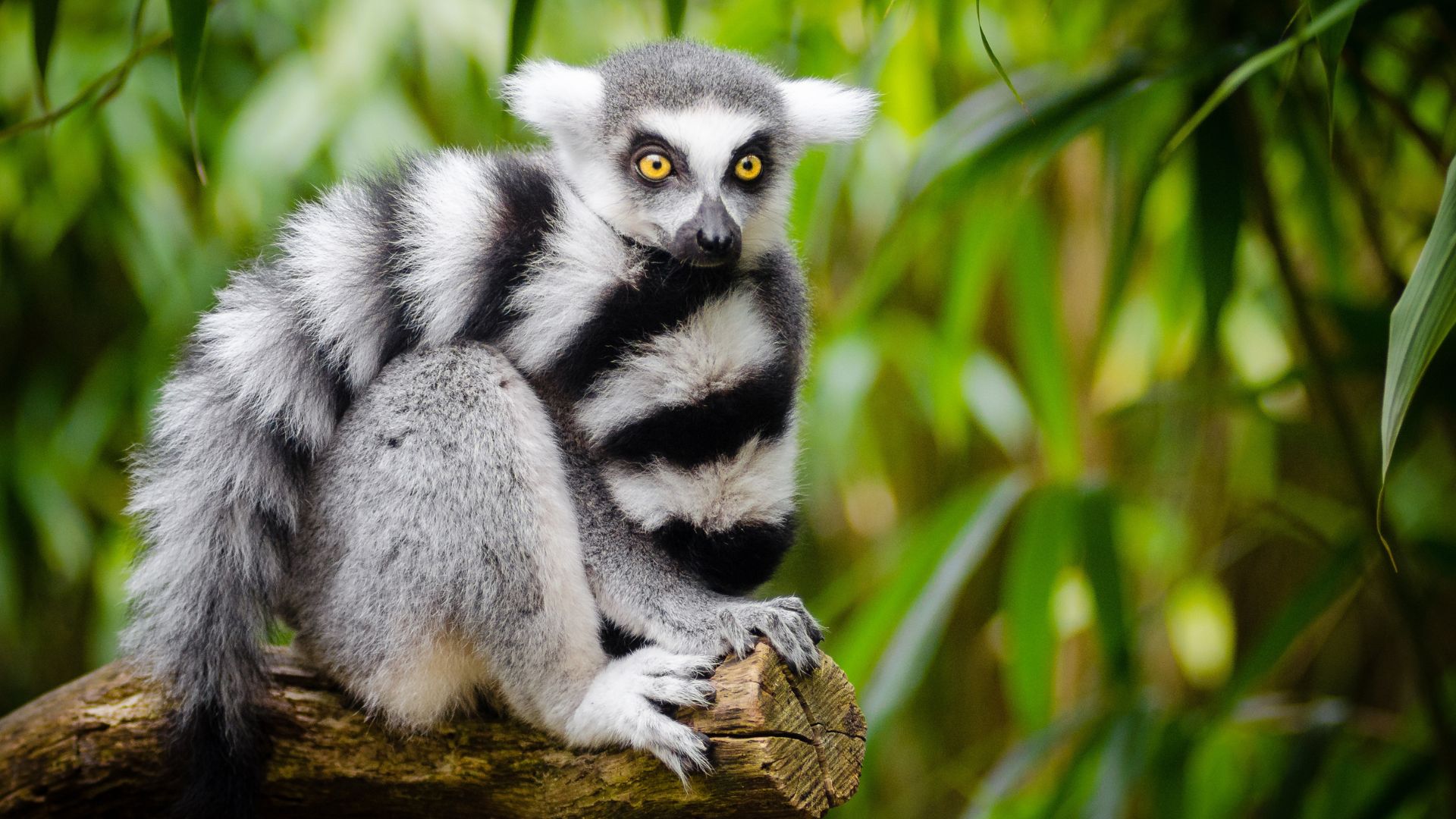Stripes are among nature’s most captivating designs, blending beauty with purpose. Whether adorning powerful predators or tiny, graceful creatures, stripes serve as more than just decoration – they’re tools for survival, from stealthy camouflage to bold communication.
Let’s take a moment to marvel at the incredible animals that wear their stripes with pride, highlighting the stunning diversity and ingenuity of the natural world.
1. Zebra
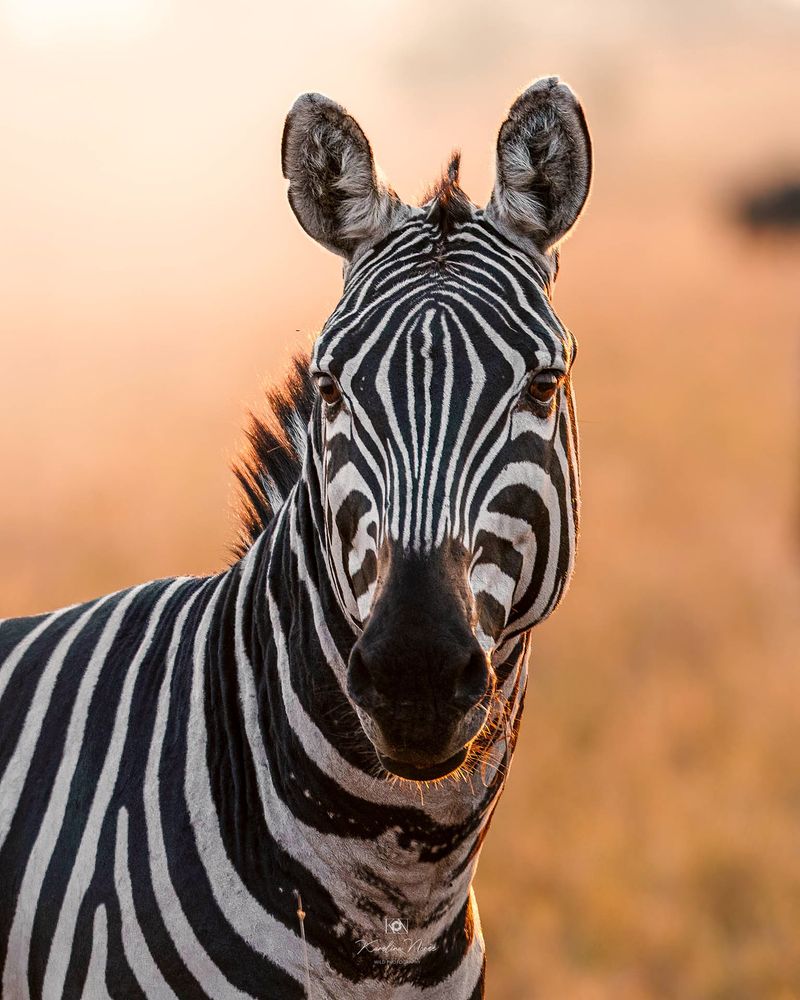
The zebra, with its iconic black and white stripes, is one of the most recognizable animals in the world. Native to Africa, zebras roam the savannas and grasslands in groups called harems.
Their striking pattern is not just for show; it serves as a form of camouflage, confusing predators with an optical illusion when zebras move in groups. Zebras are social animals, often seen grazing together.
Each zebra’s stripe pattern is unique, much like a human fingerprint, which helps them recognize one another. Besides providing camouflage, the stripes are believed to play a role in temperature regulation, keeping them cool under the African sun.
Their diet consists mainly of grass, making them an integral part of the ecosystem as they help maintain the balance of the grasslands.
Observing a herd of zebras in their natural habitat is a true spectacle, showcasing nature’s artistry in perfect harmony. Whether galloping across the plains or standing still, their beauty remains unmatched.
2. Tiger
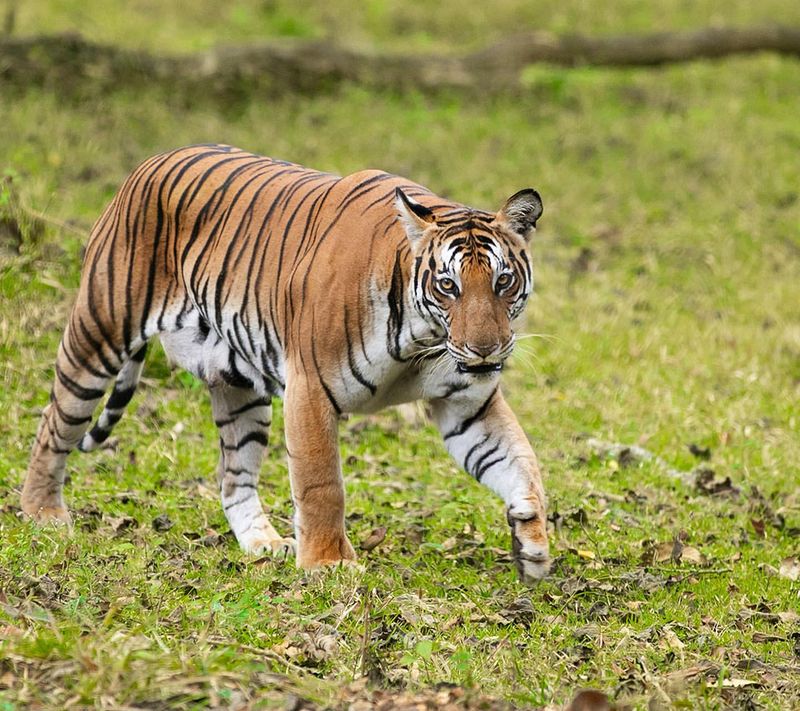
The tiger, with its majestic orange coat and black stripes, is a symbol of power and grace. These magnificent cats are native to Asia, inhabiting diverse environments ranging from tropical forests to snowy taigas.
Their stripes provide excellent camouflage, allowing them to stalk prey silently and efficiently. Each tiger’s stripe pattern is unique, helping researchers identify individual animals in the wild. The stripes break up their body shape, making them nearly invisible when moving through the dense undergrowth.
This stealth is crucial for hunting, as tigers rely on surprise to catch their prey. Tigers are solitary animals, marking their territory with scent markings and vocalizations.
They are apex predators and play a vital role in maintaining the balance of their ecosystems by controlling the population of herbivores.
Sadly, tigers face threats from habitat loss and poaching, making conservation efforts critical for their survival. Observing a tiger in the wild is an awe-inspiring experience, a testament to the beauty and complexity of nature.
3. Okapi
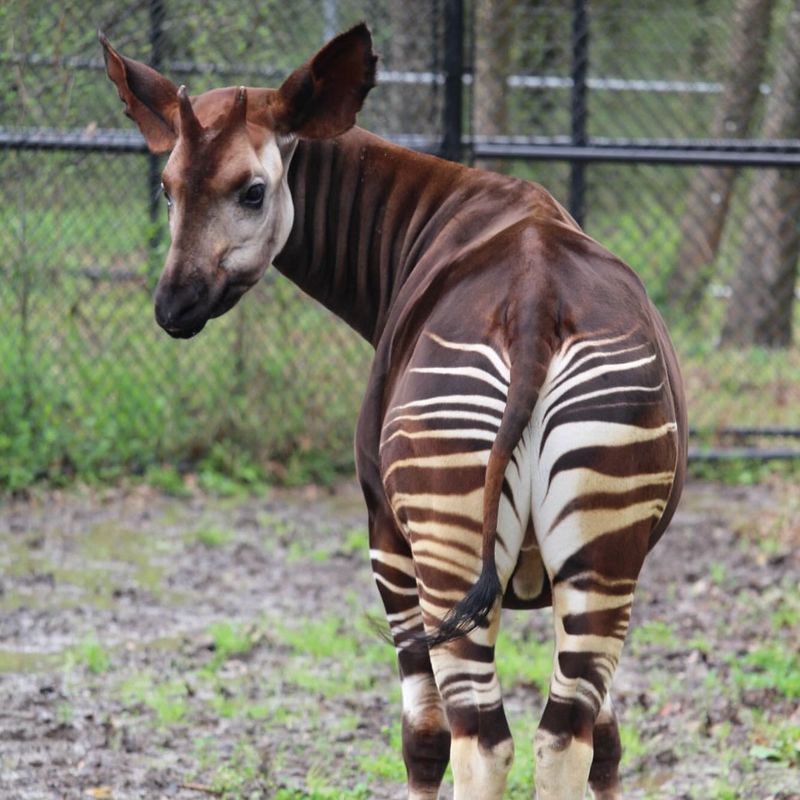
The okapi, often referred to as the ‘forest giraffe,’ is a unique and elusive animal found in the dense rainforests of the Democratic Republic of Congo.
With its dark brown body and striking white stripes on its legs, the okapi is a master of camouflage, blending seamlessly into the dappled sunlight of its habitat. Despite its zebra-like appearance, the okapi is more closely related to the giraffe, sharing a similar body shape and long neck.
These solitary creatures are herbivores, feeding on leaves, twigs, and fruit, using their long, prehensile tongues to reach their food. The okapi’s stripes are thought to help offspring follow their mothers through the dense forest.
Due to their elusive nature and remote habitat, okapis were unknown to science until the early 20th century.
Today, they face threats from habitat destruction and poaching, making conservation efforts essential to their survival. Encountering an okapi in the wild is a rare and enchanting experience, a glimpse into the hidden wonders of the rainforest.
4. Skunk
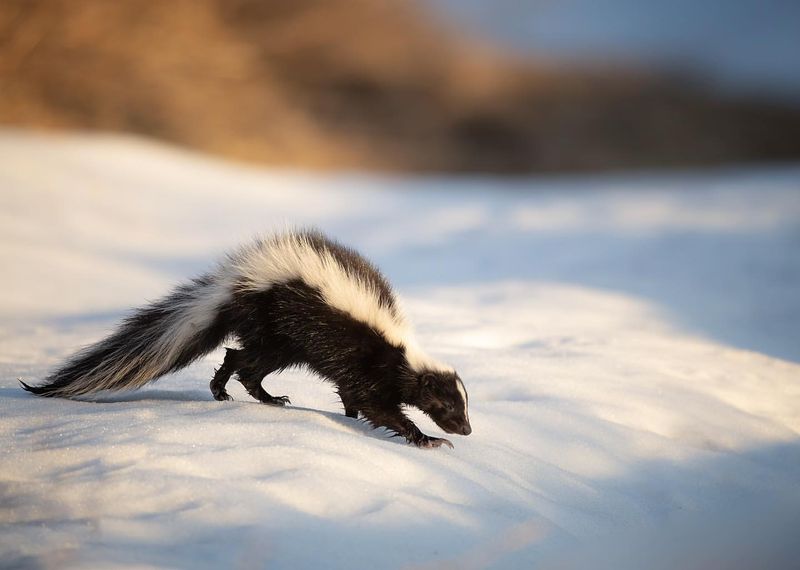
Skunks, with their distinctive black and white stripes, are known for their unique and pungent defense mechanism. Found throughout North and South America, these small mammals are often misunderstood but play a vital role in the ecosystem.
Their bold coloration serves as a warning to potential predators, signaling that they are not to be trifled with. When threatened, skunks can spray a foul-smelling liquid from glands near their tail, effectively deterring predators. Skunks are primarily nocturnal, foraging for insects, small mammals, and fruits.
They are also known to dig in lawns and gardens in search of grubs, which can be beneficial in controlling pest populations. Despite their reputation, skunks are generally docile creatures that prefer to avoid conflict.
Observing a skunk in the wild provides insight into the delicate balance of nature, where even the smallest creatures play a significant role.
5. Bumblebee

The bumblebee, with its fuzzy black and yellow striped body, is a vital pollinator in ecosystems around the world. These industrious insects are known for their remarkable flying abilities and their role in pollinating flowers and crops.
Bumblebees are social insects, living in colonies with a queen, workers, and drones. Their distinctive stripes serve as a warning to predators about their ability to sting, although they are generally not aggressive unless provoked.
The buzz of a bumblebee is a familiar sound in gardens and fields, as they move from flower to flower, collecting nectar and pollen. This activity is crucial for the reproduction of many plants, making bumblebees indispensable to agriculture and natural ecosystems.
Observing a bumblebee at work is a reminder of the interconnectedness of all living things and the importance of even the smallest creatures in maintaining the balance of nature.
6. Clownfish
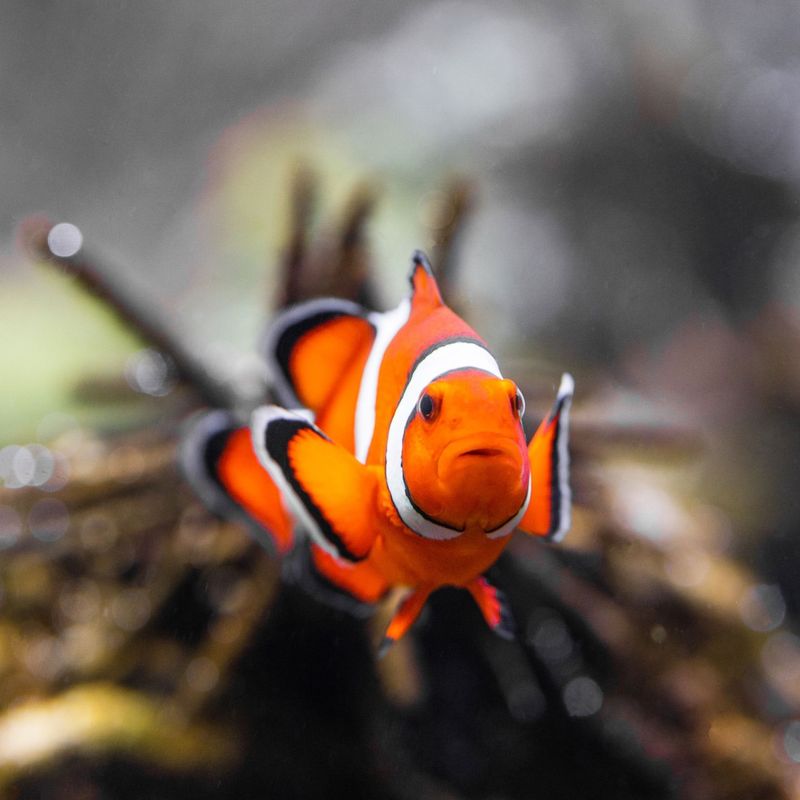
The clownfish, made famous by its orange body with white stripes, is a vibrant and fascinating inhabitant of the coral reefs. Found in the warm waters of the Pacific and Indian Oceans, these fish are known for their symbiotic relationship with sea anemones.
Clownfish live among the tentacles of sea anemones, gaining protection from predators while providing the anemones with food scraps. Their stripes help them blend into the anemone’s tentacles, offering both camouflage and a warning to potential threats.
These fish are social creatures, living in groups dominated by a breeding pair. The vibrant colors and playful behavior of clownfish make them a favorite among divers and marine enthusiasts.
However, they face threats from habitat destruction and overfishing, highlighting the need for conservation efforts to protect the delicate balance of coral reef ecosystems. Watching a clownfish dart in and out of anemone tentacles is a mesmerizing display of nature’s beauty and complexity.
7. Chipmunk
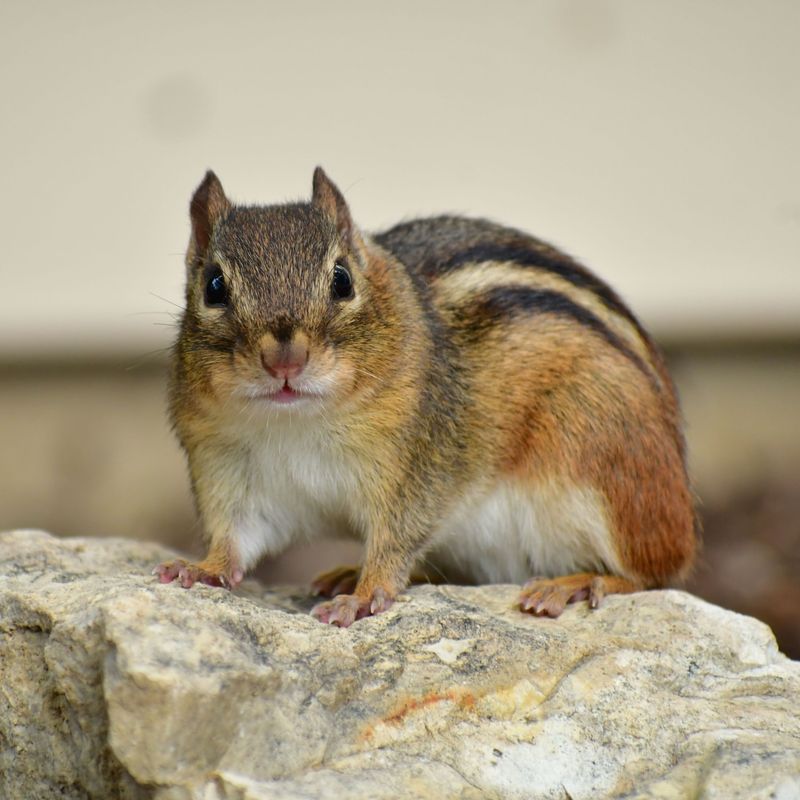
The chipmunk, with its small size and distinctive stripes running down its back, is a common sight in forests and woodlands across North America. These lively rodents are known for their cheeky behavior and the characteristic stripes that help them blend into their surroundings.
Chipmunks are busy creatures, constantly foraging for food such as nuts, seeds, and berries. Their stripes provide excellent camouflage among the forest floor’s dappled sunlight and shadows, making them less visible to predators.
In addition to their stripes, chipmunks are recognized for their cheek pouches, which they use to carry food back to their burrows. These burrows serve as storage for winter months, ensuring their survival during harsh weather.
Watching a chipmunk scurry about in its natural habitat is a delightful sight, showcasing the playful yet industrious nature of these charming animals.
8. Lemur
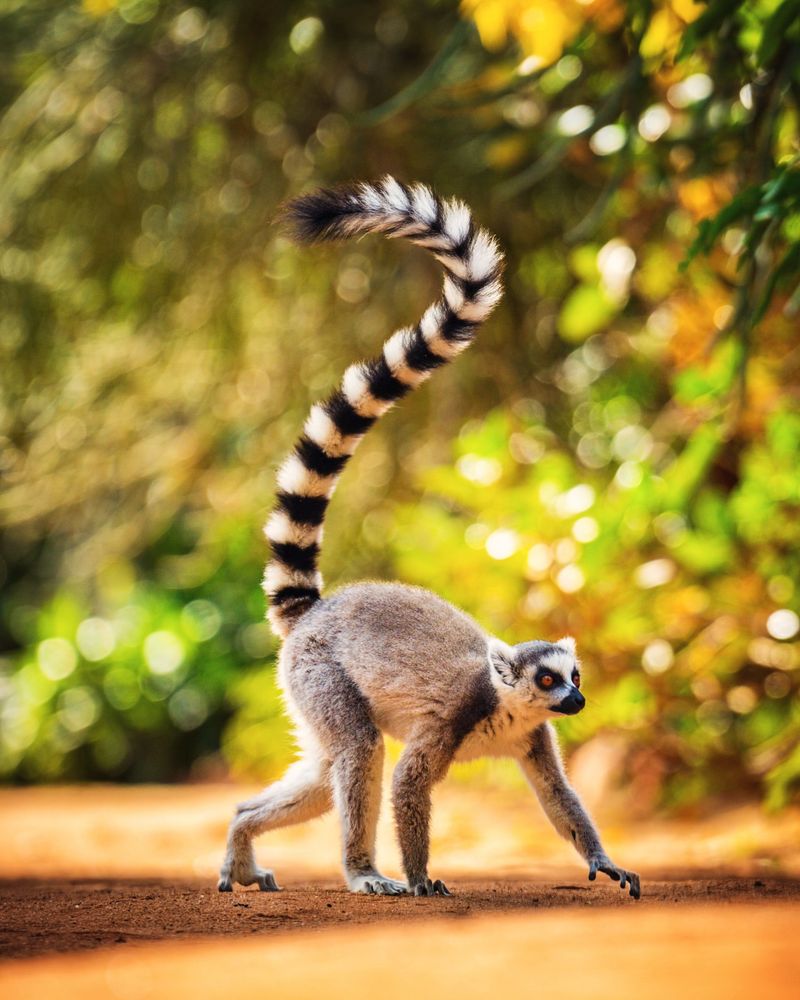
The ring-tailed lemur, with its striking black and white striped tail, is one of Madagascar’s most iconic animals. These primates are highly social, living in large groups known as troops, and are known for their vocalizations and playful behavior.
Their tails, which they use for balance and communication, are adorned with alternating black and white rings, making them a distinctive feature in the lemur world. Lemurs use their tails to signal to each other, especially during group movements.
Ring-tailed lemurs are primarily herbivores, feeding on fruits, leaves, and flowers. Observing these agile creatures in the wild is a captivating experience, as they leap gracefully through the trees.
However, habitat loss and hunting have placed them under threat, emphasizing the importance of conservation efforts to protect these unique primates and their habitats.
The ring-tailed lemur’s playful antics and social dynamics are a testament to the rich biodiversity found on the island of Madagascar.
9. Tapir
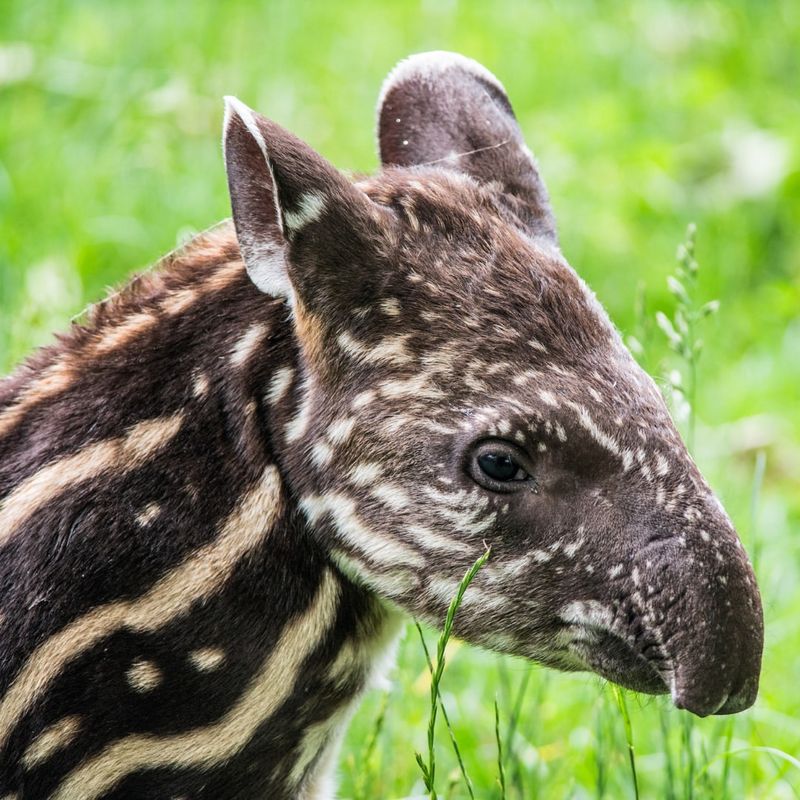
The Malayan tapir, with its unique black and white pattern, is a fascinating creature found in the rainforests of Southeast Asia. Often compared to a pig or an anteater, the tapir’s distinctive coloration helps it blend into the dappled light of its forest habitat.
Tapirs are nocturnal and solitary animals, using their excellent sense of smell to forage for leaves, fruits, and aquatic plants. The white band across their midsection is a form of disruptive coloration, breaking up their outline and helping them remain hidden from predators.
Despite their size, tapirs are agile swimmers, often taking to water to escape predators or cool off. They play a crucial role in their ecosystem by dispersing seeds through their droppings, aiding in forest regeneration.
Unfortunately, tapirs face threats from habitat destruction and hunting, making them a focus of conservation efforts. Encountering a tapir in the wild is a unique experience, revealing the wonders of rainforest biodiversity.
10. Striped Hyena
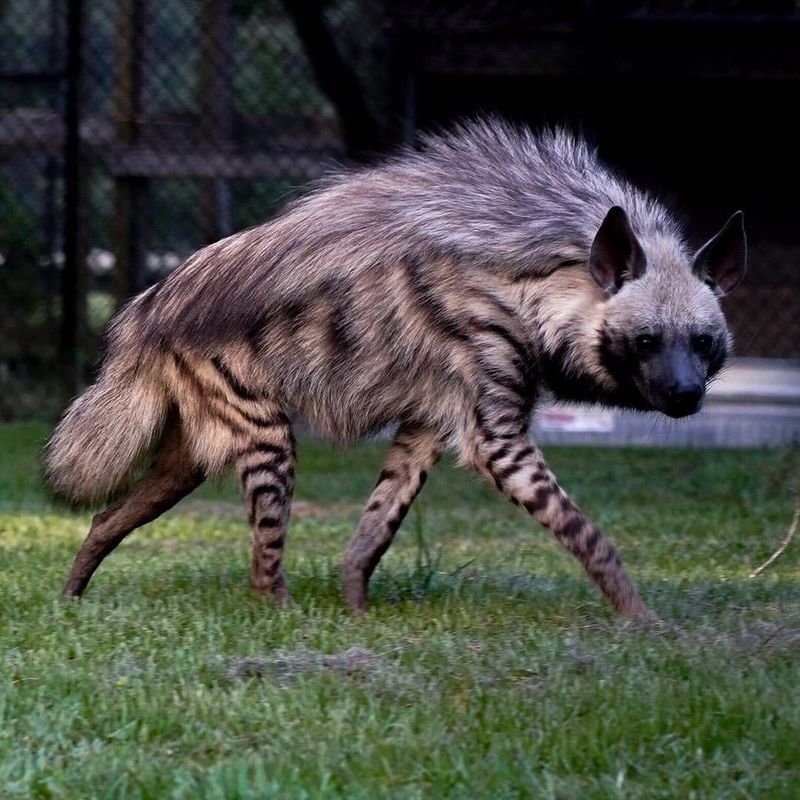
The striped hyena, with its subtle vertical stripes and sloping back, is a mysterious and often misunderstood animal. Found across North Africa, the Middle East, and India, these nocturnal scavengers play a vital role in their ecosystems.
Unlike their more famous spotted cousins, striped hyenas are solitary or found in small family groups. Their stripes help them blend into the rocky and arid landscapes they inhabit, providing effective camouflage during their nighttime activities.
Striped hyenas are opportunistic feeders, consuming a wide variety of foods from carrion to fruits. Their powerful jaws can crush bone, allowing them to access nutrients unavailable to other animals. Despite their importance in cleaning up the environment, they often face persecution and habitat loss.
Protecting striped hyenas and understanding their ecological role is essential for maintaining the health of their natural habitats. Observing a striped hyena in the wild is a rare and intriguing experience, shedding light on the lesser-known aspects of the natural world.

